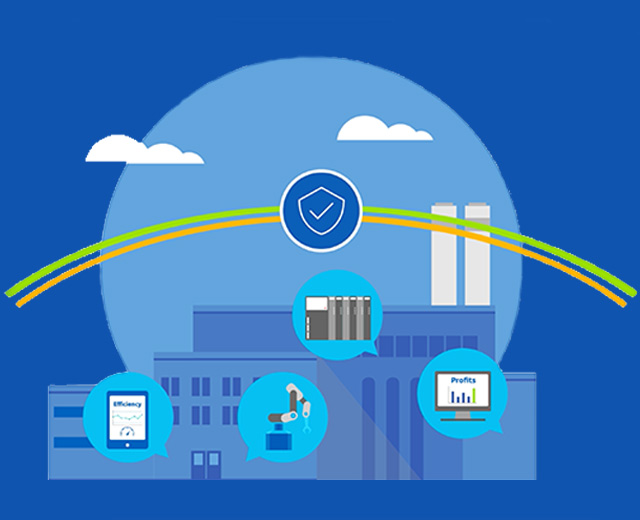- Home
- Business Knowledge Center
- Can the Cloud Be Hacked? Cloud Computing Security Issues and Challenges
Can the Cloud Be Hacked? Cloud Computing Security Issues and Challenges
The truth is, it is possible to exploit the cloud for malicious purposes. Businesses need to be aware of the security risks associated with using the cloud and take steps to protect their data and systems including cloud-based solutions.

Context
Cloud computing delivers on-demand access to IT resources — such as applications and data —over the Internet. The concept of moving compute resources to the cloud continues to be a hot topic for businesses, as it offers many advantages over traditional on-premises IT solutions.
Not only that, but the cloud is a ubiquitous part of modern life. But with that ubiquity comes concerns about data breaches and cybercrime, as organizations of all sizes scramble to stay one step ahead.
Cloud hackable?
Can the cloud be hacked?

-
Typically, hackers can gain access to your data or systems through vulnerabilities in the cloud infrastructure or user error of some type (whether malicious or non-intentional). Other cloud attack techniques include launching attacks against other businesses using the same cloud provider.
Despite numerous assurances from cloud providers that their products and cloud-based solutions are secure, many people are still concerned about what could happen if their information was stolen or accessed by hackers.
Challenges
Cloud computing security issues and challenges explained

-
There are three key security issues with cloud computing, which coincide with the cybersecurity “CIA” triad: confidentiality, integrity, and availability. Confidentiality ensures that sensitive data can only be accessed by authorized individuals, and integrity is the assurance that any data or information cannot be altered or deleted without authorization. Availability ensures that data is available when it’s needed.
Many factors contribute to the challenges of cloud computing security, and most are equally relevant for on-premise infrastructure.
For cloud specifically, enterprise cloud providers have scores of customers, so they need to have enough servers to meet the skyrocketing demand. This growth makes it difficult to secure all the servers and data against attack.Second, the cloud is global, which means people can access data from anywhere in the world at any time.
Last, and certainly not least, is third-party risk management. One of the primary concerns with cloud security is that businesses are increasingly sharing resources with other organizations. Even if your company’s security is robust, what about the companies you do business with? This increases the potential for a security incident if one of those businesses’ resources is compromised.
Private vs. public
Private vs public cloud security

-
Cloud computing security issues and challenges also raise the question around the security of public clouds and private clouds which are both leveraged to manage and store data. However, key differences exist between the two cloud options.
The prevailing school of thought on private vs. public cloud security is that private cloud is often considered to be the more secure option. While public clouds offer more flexibility — as they can be accessed by anyone who has an internet connection — private clouds are thought to be more secure as they can only be accessed by authorized users.
Public cloud security is a concern for many businesses. Many experts believe that companies that use public clouds do not have control over their data security, as the provider is responsible for securing the data. This can be a risk for businesses because the provider may not have enough resources to secure all of the data in its cloud.But the truth is, both public and private clouds are vulnerable to security risks. Think about it this way: just because your local area network is private, is it not still vulnerable to numerous security risks? Of course, it’s vulnerable.

-
Comparing the benefits and drawbacks of private vs. public cloud security is beyond the scope of this article, but here’s what you need to know about cloud computing security issues and challenges. Just because your cloud is private, you must resist falling into a sense of complacency in which you believe all your firewalls and network security solutions are providing complete protection.
No matter which cloud-based solution you’ve deployed, threats that rely on social engineering (like malware and ransomware) can bypass all security measures. Today, employees are working more remotely than ever. No matter where they’re located, they can easily download or click a malicious link that can provide attackers with the ammunition they need to compromise your systems.
So, can a cloud be hacked? One final thing to mention is that many companies lack the expertise and resources to manage private cloud security.
Ultimately, we’re not suggesting one cloud type – private vs public cloud security is better than the other. You need to weigh out the benefits and drawbacks of each and match them to your organizational requirements. While security is critical, you should also take financial and operational considerations into account.
Network security products and services
AT&T Network Security provides products and services to help your business protect and connect your users, data, and applications on premises, remotely, or in the cloud.

Defense
How a business can defend against security issues of cloud computing

-
Regardless of your cloud configuration, security measures must be in place to defend against all types of threats.
Here are five simple things you can put in place to protect your company’s cloud infrastructure.
1. Foster a culture of security awareness
Employees are the weakest link in the cybersecurity chain. Sometimes, all it takes is one employee to click on a malicious attachment or follow a legitimate-looking (but malicious) link and provide login information, and the attacker can do serious damage.When everyone — from frontline employees to senior management to board members — is bought-in to security, the company benefits. No matter how you choose to promote security awareness including issues of cloud computing, find a way that works for your employees and your company.
2. Test your security
Your organization may boast all the best cybersecurity hardware, software, services, policies, procedures and even culture. If so, you’re ahead of the game! But how do you really know if everything is working?That’s where cybersecurity testing comes in, as you need to validate that you’ve got all the security controls in place and that they are working correctly. Whether it’s penetration testing in cybersecurity or network vulnerability scanning, testing will go a long way in preventing future attacks.

-
3. Practice good basic security hygiene
Backups and patch management may sound boring, but sometimes these simple processes can make a world of difference for your company’s security posture. Backups (cloud or otherwise) offer a layer of protection from ransomware and other malware that can prevent you from accessing your files. With a good backup, you can restore your data and minimize the damage.
Patching your hardware and software is an incredibly effective method of preventing attacks. When your software and hardware are up to date, the vulnerabilities that attackers can exploit are addressed. Unpatched vulnerabilities are one of most prominent attack methods, so patching keeps you one step ahead.
4. Use encryption and multi-factor authentication (MFA) wherever possible
5. Manage those passwords
Use strong passwords (the longer and more complicated, the better) and ensure they are changed at least once per year. Use a password manager to manage your passwords; while they are a single point of failure, they provide more security than having employees write their passwords on sticky notes or physically “hiding” them.
Cybersecurity consulting services
AT&T Cybersecurity consulting offers planning services that address the essentials of security with a multi-layered approach.

Cybersecurity
How Cybersecurity solutions and services can help

-
Learn more about cybersecurity consulting and how it can help with the strategy, planning, and assessment of an organization’s cloud security architecture and to help identify vulnerabilities and configuration errors.
Threat detection and response solutions enables continuous and centralized security monitoring for public cloud assets.
For today’s remote and hybrid workplace, managed cybersecurity services support highly secure access needs for workers on and off the corporate network.
To get in touch with a Business Solutions specialist, click here.
Resources
- Terms of use
- Your privacy center
- Accessibility
- Your Privacy Choices
- Health Privacy Notice
- Cyber Security
© AT&T Intellectual Property. All rights reserved. AT&T, the AT&T logo and all other AT&T marks contained herein are trademarks of AT&T intellectual property and/or AT&T affiliated companies. All other marks are the property of their respective owners.